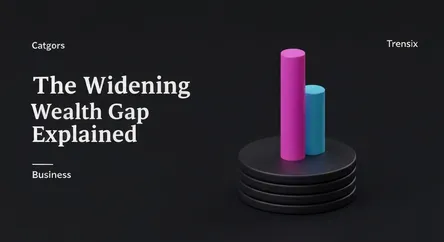Business
The Widening Wealth Gap Explained

Discover what the wealth gap is, why it's a hot topic, and how this growing economic divide impacts societies and individuals worldwide.
What is it?
The wealth gap, also known as wealth inequality, refers to the unequal distribution of assets among a population. It's not just about income; it's the total value of what someone owns—including property, stocks, savings, and investments—minus their debts. A wide wealth gap means a small percentage of the population holds a disproportionately large share of the country's total wealth, while the majority holds very little. This concentration of assets at the top creates a significant economic divide that can persist and grow across generations, making it a critical measure of economic health and social equity.
Why is it trending?
The wealth gap is a major topic of discussion due to several converging factors. The economic fallout from the COVID-19 pandemic highlighted and often exacerbated existing inequalities, as asset owners saw their wealth grow while many wage earners struggled. Rising inflation, debates over tax policies for the super-rich, and increased public awareness of social justice issues have also pushed the topic into the spotlight. Furthermore, technological advancements and globalization have created immense fortunes for some while displacing others, fueling a global conversation about fairness and economic stability.
How does it affect people?
A significant wealth gap has profound effects on society. For individuals with less wealth, it can limit access to quality education, healthcare, and housing, hindering social mobility and locking them into cycles of poverty. This can lead to increased financial stress and fewer opportunities for their children. On a broader scale, extreme inequality can slow economic growth, as it reduces overall consumer demand. It can also contribute to social and political instability, as feelings of disenfranchisement and unfairness grow among the general population, eroding social cohesion and trust in institutions.